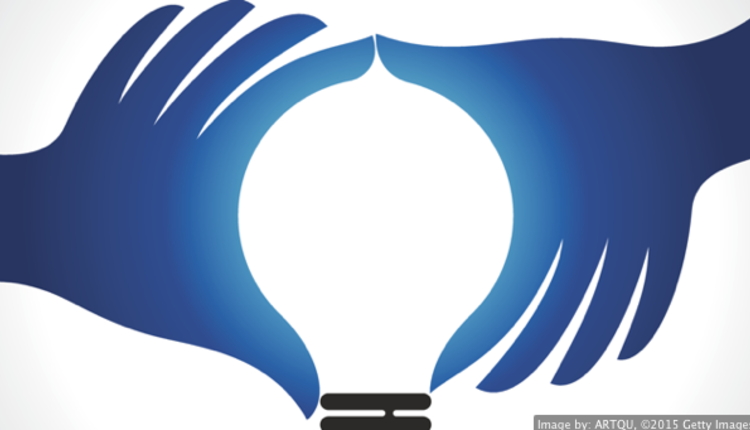
When I joined this industry as a document designer in the mid-1990s, I used a script-based tool with limited capabilities to visually confirm changes that I made to a document. As a result, I spent a great deal of time in front of a Xerox 4890 running sign-offs, looking for errors and measuring documents on physical media. Later, I found the process could be handled more efficiently by opening up numerous portable document format (PDF) windows to perform checks. However, it was still difficult to ensure consistency because proofing was hard to coordinate across multiple stocks, brands and logos.
Unfortunately, not much has changed since then. In an age of multi-touch, multi-channel and omni-channel communications, proofing has become a significantly more complex process than it used to be. As a result, embarrassing channel gaps are causing frustration and concern to marketers and line of business (LOB) owners as they try to execute a consistent voice across all channels. Increasing the complexity of this process is the need to coordinate among numerous suppliers, all of whom play a role in the creation of customer communications—and all of whom have their own workflows and timelines.
Today, the burden of proofing falls to the business owner in charge of the communication, making them responsible for the channel gaps, even though they often are not able to see channel outputs side by side. Where in this tangled web can a business owner find one single place to view each proof slated for its own output?
The challenge of the channels
Working with multiple suppliers to produce across multiple channels too often makes coordination difficult and introduces the chance for errors, even if the channels don’t cross. Implementing all channels to go live on the same day, or coordinate with other marketing events, creates even more difficulty because LOB owners are often at the mercy of a supplier’s own lead time.
In an omni-channel communication scenario, the difficulty level is also high due to magnitude. Unlike multi-channel experiences, omni-channel experiences cross, so it is critical that every aspect of the communications be consistent. If a logo is missed on the mobile phone at portrait orientation or the color is wrong on the web version, the marketing team will see this as a critical channel gap that will impact the customer experience negatively. Who then is to blame? In most cases, it is the person or department responsible for proofing.
Advances in proofing
Despite these proofing challenges, no LOB owner—and no service provider—is capable of visually proofing designs across all channels on one screen. To make matters worse, many enterprises lack a sign-off process that can detect any channel gaps. When enterprises attempt omni-channel communications, they do so either without assurance that there are no channel gaps or they invest an extraordinary amount of time and effort checking for consistency. Either way, the state of proofing often still is woefully frustrating.
Up until now, customer communications management (CCM) solutions have made good on the promise to deliver to multiple channels, but they have not made it easy to address channel gaps at the source of the designs, nor has it been possible to shorten the approval process for multiple channels. The fact is that executing a consistent voice across multiple channels requires the need to proof multiple experiences more effectively and more visually—after all, in the end, it’s all about what the customer sees.
Unfortunately, not much has changed since then. In an age of multi-touch, multi-channel and omni-channel communications, proofing has become a significantly more complex process than it used to be. As a result, embarrassing channel gaps are causing frustration and concern to marketers and line of business (LOB) owners as they try to execute a consistent voice across all channels. Increasing the complexity of this process is the need to coordinate among numerous suppliers, all of whom play a role in the creation of customer communications—and all of whom have their own workflows and timelines.
Today, the burden of proofing falls to the business owner in charge of the communication, making them responsible for the channel gaps, even though they often are not able to see channel outputs side by side. Where in this tangled web can a business owner find one single place to view each proof slated for its own output?
The challenge of the channels
Working with multiple suppliers to produce across multiple channels too often makes coordination difficult and introduces the chance for errors, even if the channels don’t cross. Implementing all channels to go live on the same day, or coordinate with other marketing events, creates even more difficulty because LOB owners are often at the mercy of a supplier’s own lead time.
In an omni-channel communication scenario, the difficulty level is also high due to magnitude. Unlike multi-channel experiences, omni-channel experiences cross, so it is critical that every aspect of the communications be consistent. If a logo is missed on the mobile phone at portrait orientation or the color is wrong on the web version, the marketing team will see this as a critical channel gap that will impact the customer experience negatively. Who then is to blame? In most cases, it is the person or department responsible for proofing.
Advances in proofing
Despite these proofing challenges, no LOB owner—and no service provider—is capable of visually proofing designs across all channels on one screen. To make matters worse, many enterprises lack a sign-off process that can detect any channel gaps. When enterprises attempt omni-channel communications, they do so either without assurance that there are no channel gaps or they invest an extraordinary amount of time and effort checking for consistency. Either way, the state of proofing often still is woefully frustrating.
Up until now, customer communications management (CCM) solutions have made good on the promise to deliver to multiple channels, but they have not made it easy to address channel gaps at the source of the designs, nor has it been possible to shorten the approval process for multiple channels. The fact is that executing a consistent voice across multiple channels requires the need to proof multiple experiences more effectively and more visually—after all, in the end, it’s all about what the customer sees.

This is an example of what the future of proofing looks like. Side-by-side omni-channel proofing allows designers and approvers to quickly and easily view and navigate multiple channel versions of a communication side by side on a single screen.
Marketers and LOB owners need the ability to see how an experience looks next to other channel manifestations with the same experience. They need to be able to browse, tap and swipe through mobile and tablet versions at various orientations to adequately proof a communication. They need to have the ability to quickly see what the experience will look like even without web access, with slow web access and without having to understand JavaScript support. They need to see things in a variety of contexts, on a variety of devices and with a plethora of screen sizes. In short, there is a strong need to reduce the burden of proofing by having visual and physical assurance of cross-channel consistency.
I know that if I had better proofing technology in the 90s, I would have been able to be home a lot earlier than I often was. I would not have had to spend hours hunting through multiple versions to ensure that all the right logo variants were correct, that the colors were accurate and that the text was consistent. Fortunately for today’s document professionals, CCM technology is quickly advancing in the single-screen proofing, which allows for quick and easy viewing and navigating of a communication’s multiple channel versions on one screen side by side. When you get that technology in place, you can plan on having dinner with the family more often.
Scott Draeger is vice president of product management at GMC Software Technology, a provider of multi-channel and highly personalized document outputs for customer communications management. For more information, visit www.gmc.net or follow him on Twitter @scottdraeger.
Marketers and LOB owners need the ability to see how an experience looks next to other channel manifestations with the same experience. They need to be able to browse, tap and swipe through mobile and tablet versions at various orientations to adequately proof a communication. They need to have the ability to quickly see what the experience will look like even without web access, with slow web access and without having to understand JavaScript support. They need to see things in a variety of contexts, on a variety of devices and with a plethora of screen sizes. In short, there is a strong need to reduce the burden of proofing by having visual and physical assurance of cross-channel consistency.
I know that if I had better proofing technology in the 90s, I would have been able to be home a lot earlier than I often was. I would not have had to spend hours hunting through multiple versions to ensure that all the right logo variants were correct, that the colors were accurate and that the text was consistent. Fortunately for today’s document professionals, CCM technology is quickly advancing in the single-screen proofing, which allows for quick and easy viewing and navigating of a communication’s multiple channel versions on one screen side by side. When you get that technology in place, you can plan on having dinner with the family more often.
Scott Draeger is vice president of product management at GMC Software Technology, a provider of multi-channel and highly personalized document outputs for customer communications management. For more information, visit www.gmc.net or follow him on Twitter @scottdraeger.





















